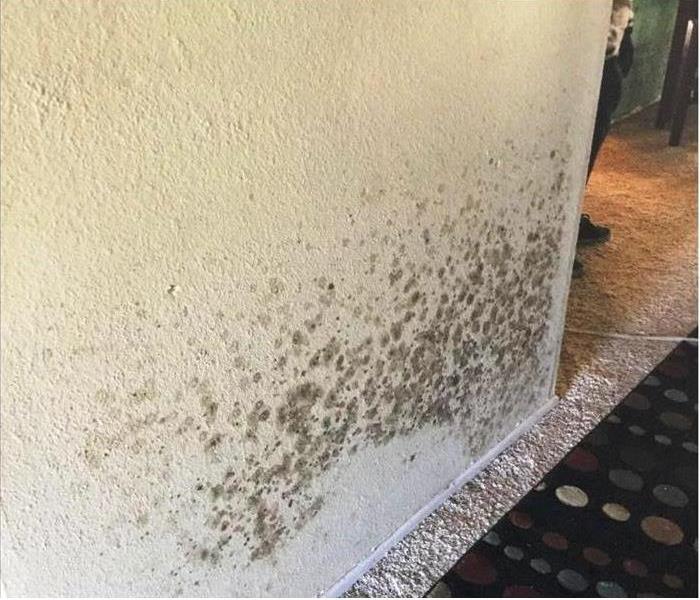Water Damage Can Leave An Unwanted Guest
3/11/2020 (Permalink)
After you have suffered through the disaster water damage can leave behind, you may sigh a breath of relief and think the worst is over. Unfortunately, if not mitigated correctly, the worst may be yet to come.
When it comes to water damage, they key to avoiding future mold problems is time. The quicker you can get to the source, fix the problem, and begin the drying (or demolition) the better.
Ronnie Wilson, a Project Estimator here at SERVPRO of Columbia & Suwannee Counties, recommends waiting no longer than 3 days to address the mold risk.
He also recommends the following steps
Dry out the affected area. Once the water has been extracted, use fans and a dehumidifier to help dry out the area. If possible, open windows to allow for air circulation and faster drying. You want to dry the area out as soon as possible. If you have a finished basement and the drywall was affected, you’ll probably have to cut away the areas that were touched by water as the drywall will crumble and the paper backing is a good source of food for mold. If you have baseboard trim, take it up first, and if it’s made from pressboard it will likely not be salvageable. If it was wood, you might be able to save it.
Disinfect. This is a crucial step that is often overlooked. After the area has dried out, including wood beams, insulation, drywall, etc., use a good disinfectant to get rid of any bacteria that might have come up through sewers, toilets, etc. Disinfect all areas affected by the flood waters including walls and wood and non-upholstered furniture that sat in flood water.
SERVPRO of Columbia & Suwannee Counties uses proprietary, OSHA-approved cleaning agents that may be needed to clean and remove odors and/or contaminants on your property.
- Deodorization products control odors from excessive moisture.
- Disinfection products stop the growth of bacteria, fungi, mildew, and other harmful microorganisms.
Dispose of damaged items responsibly: You’ll be tempted to throw everything into a dumpster and send it all away and out of site. But if you can organize damaged goods into piles and take what you can to recycling centers, you will help alleviate the pressure on your local landfill site. Go to your city or town’s waste management website to find out where to recycle old paints, stains, adhesives and other toxic liquids, any damaged electronics from cell phones to TVs and computers, furniture, and even drywall.




 24/7 Emergency Service
24/7 Emergency Service
